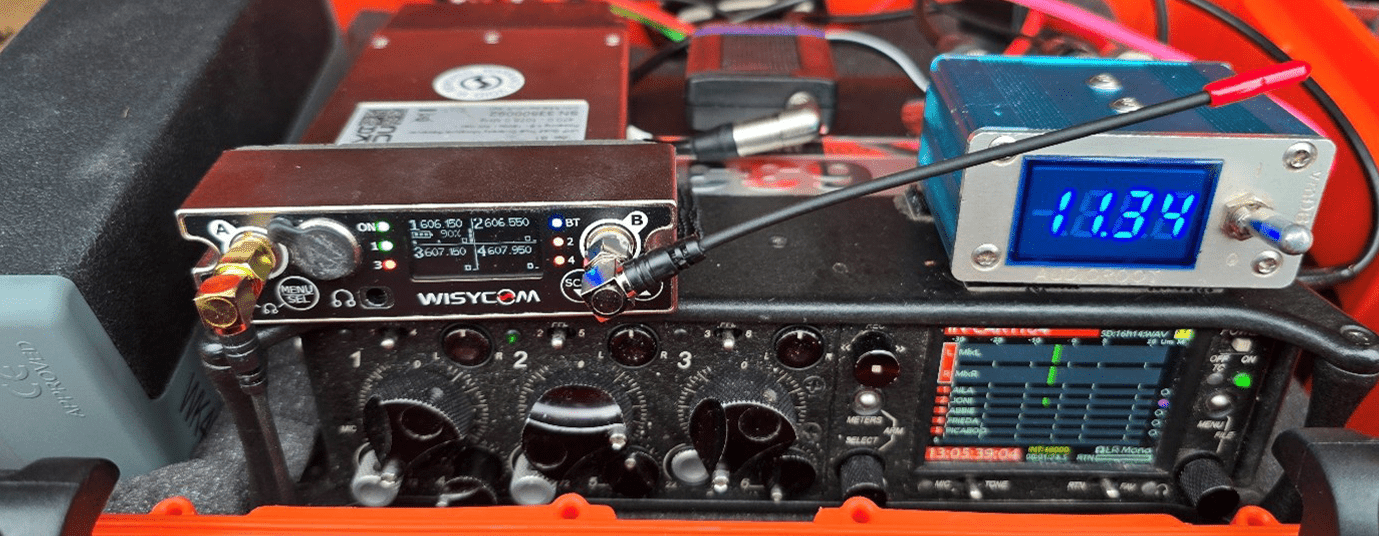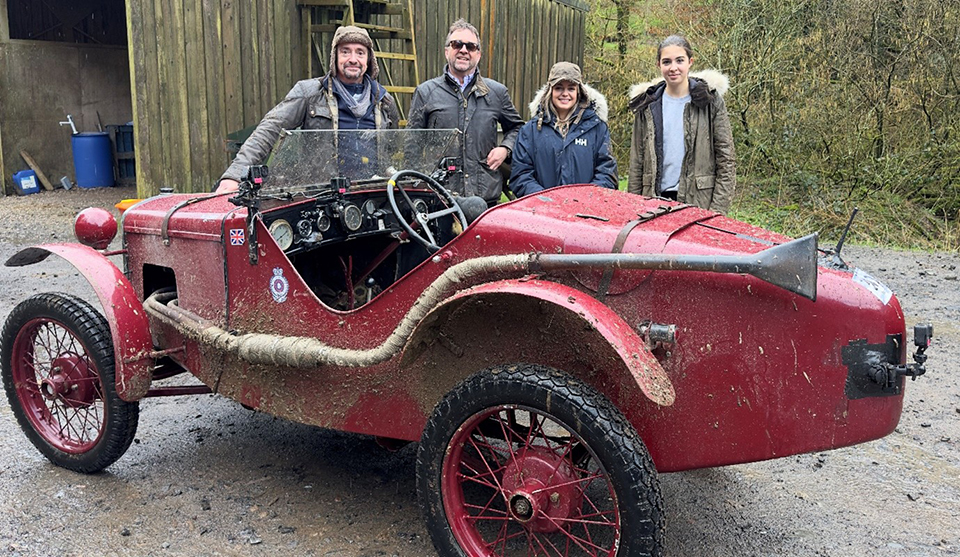The In-Car Rig Rides Again!
Home > The In-Car Rig Rides Again!
After a chat with an old director friend, I decided it was time to bring back my in-car audio setup. Previously (Mark I maybe) I used a Zaxcom RF system, but this time around, I've gone all-in with Wisycom.
You might wonder why I'd bother with a multi-track recorder/mixer in the car when both of the RF systems I use can record timecoded audio right in the transmitters. It's a fair question! But I see it as a "belt and braces" approach – recording in two places gives me extra security. Plus, this new setup lets me send a "live mix" to a follow vehicle. This is super handy for anyone in editorial or even the safety team to hear exactly what's being said in the “Hero” car.
Besides the RF mics worn by the cast or contributors, I also tuck away a couple of hidden "plant mics." Again, it's all about that extra backup! And if I'm working with a unique vehicle, I can even add an FX mic near the exhaust or in the engine bay to capture any of those idiosyncratic sounds.
The Antenna Secret
In my humble opinion, the key to any successful car rig is getting the antennae on the outside of the car. Even with how good RF is these days, trying to transmit from body-worn mics inside one car to a receiver in a bag in a second car is a recipe for trouble. You've got people (who are mostly water!) sitting on the transmitters, and both cars act like Faraday cages – essentially blocking signals. This combination means you'll definitely run into range issues. I use a small magnetic antenna with a long cable that runs down to wherever my Pelican case rig is stashed.
For the follow vehicles external antenna I like to go with something more substantial: Hague suction mounts and a magic arm with super clamps to secure an Audio Wireless diversity fin on the roof. And for extra peace of mind, I add a rubber-coated safety chain around the arm and clamp, through a slot in the diversity fin, into the door, and then around the grab handle in the back seat. It's a solid setup!
Quick Setup for Fast-Paced Shoots
The kit is, in its most basic form, extremely quick and simple to set up. With the cast or contributor’s mic'd up, I can have both the main and follow cars rigged before the camera department even finishes with their mini cams. It becomes a matter of finding a space for the peli, running the antenna cable and fixing the antenna in place, set the gain structure and hit record. When the hero car is being rigged, you'll usually see my bum sticking out the boot (trunk) of the car while the camera department crawls around the front seats. Being able to work in a different part of the car whilst the camera guys do their thing makes the whole process that little bit simpler and stress-free. In a fast-moving doco environment, if the need for an in-car setup arises, the last thing you want is to be crawling over each other or performing a dosey-doe around each other. Using the Tentacle system and it’s Timebar app enables us to lock GoPro cameras with accurate timecode..
Of course, if there's more time, that's when I start looking at adding those plant mics and SFX mics. Once the right place for the mic has been located the time gets eaten by running cables from the mic to the recorder. I try and use as narrow gauge cable as possible, easier to hide and if need be and be run through shot and not be seen.
Worth the Investment
I won't lie, this car rig isn't cheap to put together when you consider the cost of the individual parts, but I truly believe it's worth its weight in gold . It's also expandable, more people on RF? An 888 can go in the box and you're up to 16 channels - let's not try and get 16 people in a car though shall we. I think the most “mic heavy rig” I've had up and running using this kit was on the “Jose Andres & Family” project. Based around a 664 with CL6 expander we had 4 channels of Zaxcom (4 x TRXLA5 – QRX200) coupled with 4 x DPA4097 plant mics and topped off with 2 Sanken Cubs.
On an episode of “Richard Hammonds Workshop” 2 in Car kits were required as well as my standard bag kit for Richard to go Hill Climbing in Exmoor. Both kits were based around Zaxcom with 2 channels being fed into a 633 via QRX200. The cost of running 2 identical kits brought a tear to the eye of productions insurers. Thankfully the kit and the cars came back in the same perfect working order they started the day in.
© 2025 Cochyn Sound. All Rights Reserved. Website by Delwedd

